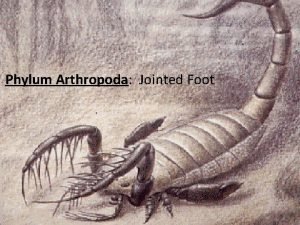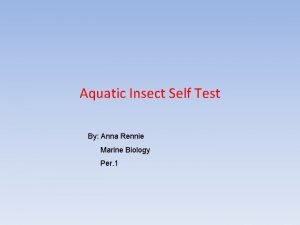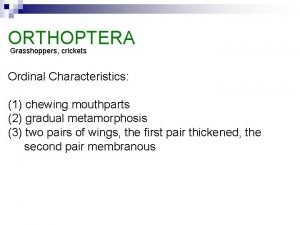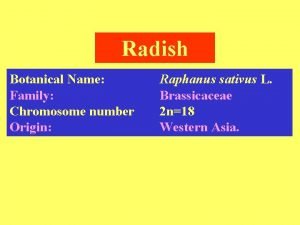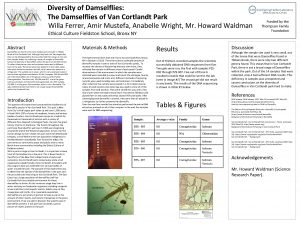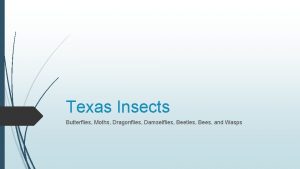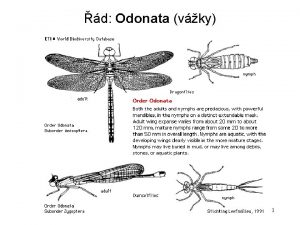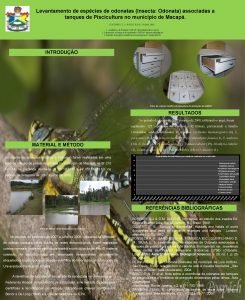Order Odonata Dragonflies and Damselflies This scientific name













- Slides: 13

Order : Odonata (Dragonflies and Damselflies)

This scientific name is derived from a Greek word, odon, meaning " tooth, " possibly referring to the teeth on the mandibles or tusk-like shape of the insect's abdomen. Classification of Order: Odonata The majority of odonata belong to two suborders, the Anisoptera (Dragon flies) and Zygoptera (Damsel flies). Order : Odonata (dragonflies and damselflies) Suborder : Anisoptera (dragonflies) Family : Libellulidae (common skimmers) Genus : Crocothemis Species : Crocothemis erythrea Suborder : Zygoptera (damselflies) Family : Coenagrionidae (narrow-winged damselflies) Genus : Ischnura Species : Ischnura senegalensis

General Chracters of order: Odonata 1 -shape : this insects have beautiful colors. 2 -size : medium to large. 3 -Body is divided into : a) Head : very mobile hypognathous head. Short filiform antenna. Mandibulate (chewing) mouth parts. Large compound eyes, 3 ocelli. b)Thorax : Short and compact. Two pairs of nearly similar net-veined wings with pterostigmata. In the hind wing, the inner margine is broader than the outer margine. Short walking legs.

c) Abdomen : Elongated, slender with 10 segments. One segmented cerci work as catch organ in male. Male capulatory organs on second abdominal sternites (ventral side). Female genitalia on the last abdominal segment. 4 - Metamorphosis : Incomplete metamorphosis. Eggs are laid in water or on vegetation near water places , they then developed and hatch to produce pronymphs molts (9 -14 times) approximately transform into reproductive adults. These insects predators on other aquatic species and small fishes and organisms


5 - habitat : Dragonflies and damselflies range from the arctic to the tropics and are even found in desert regions where water is present. Immature dragonflies and damselflies, called naiads, live in water and often have preferences for a specific kind of aquatic habitat, some preferring streams and others ponds or lakes. 6 - Feeding : Adult dragonflies and damselflies catch and eat insects while they are flying, including flies, wasps, moths, and beetles. Naiads are voracious predators and feed mostly on other insects in water, but they also can be cannibals by feeding on other naiads of their own species. Some large naiads have been known to feed on small fish.

7 -Differences between the Anisoptera and the Zygoptera Anisoptera Zygoptera 1 -Strong fliers. 1 -weak fliers. 2 -large and robust at all stages. 2 -small and delicate at all stages. 3 -Hindwings broader at base, held 3 -Wings of equal size, narrow at horizontally at rest. base, held vertically at rest. 4 -Eyes not projecting from sides of 4 -Eyes bulbous and prominent. head. 5 -Most families with reduced or 5 -Females with well developed vestigial ovipositors. 6 -Nymphs robust, with rectal gills. 6 -Nymphs slender, with paddlelike caudal gills. Eggs usually laid at water 7 -Eggs inserted into stems of surface or on surfaces of aquatic plants.

Dragon fly nymph Damsel fly nymph

8 – Examples : Dragon fly (Orthetrum cancellatum) Black-tailed Skimmer

Damsel fly

Ischnura

Ischnura ramburii

Ischnura senegalnses
 Odonata publishing sdn bhd
Odonata publishing sdn bhd One of the representatives of phylum arthropoda is
One of the representatives of phylum arthropoda is Odonata wings
Odonata wings Odonata wings
Odonata wings Insect
Insect 1st order 2nd order 3rd order neurons
1st order 2nd order 3rd order neurons Name all the rays
Name all the rays Information gathered during an experiment
Information gathered during an experiment How is a scientific law different from a scientific theory?
How is a scientific law different from a scientific theory? Orthoptera
Orthoptera Radish scientific name pronunciation
Radish scientific name pronunciation Chromosome number of garlic
Chromosome number of garlic Zoological classification of cattle
Zoological classification of cattle Phylum order
Phylum order

